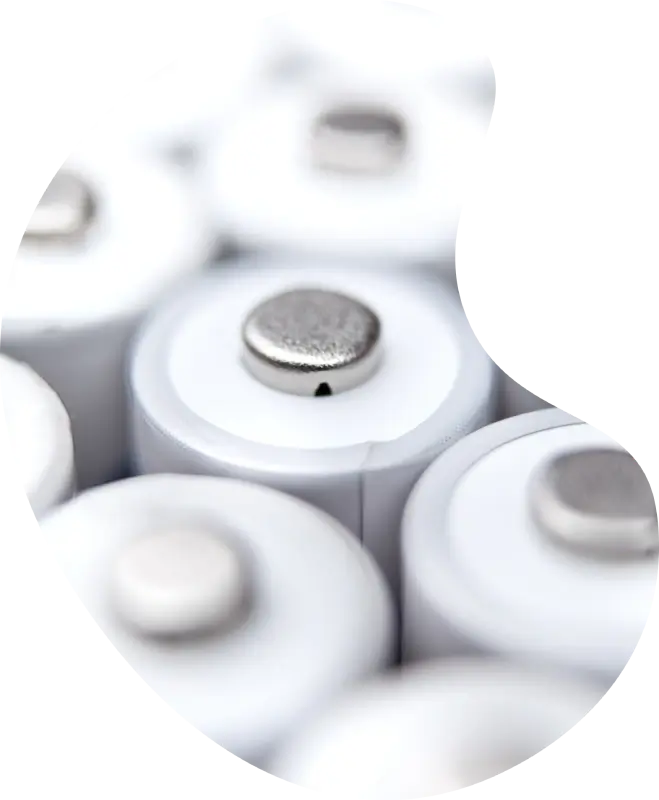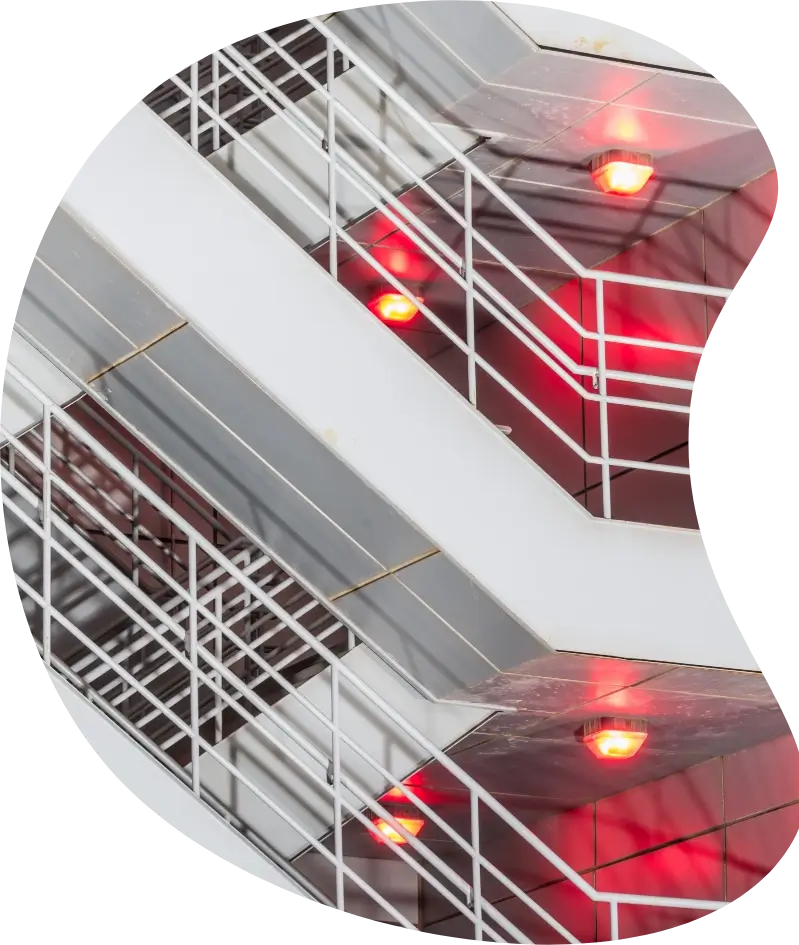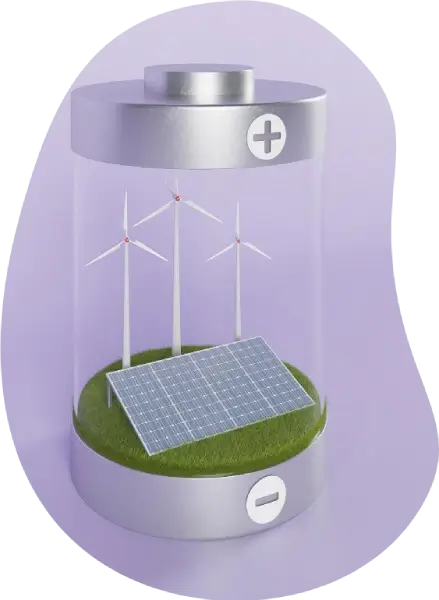- Call/Text:
- E-Mail:
contact@redbluesys.com
- Location:
Covina, CA 91723
Stage 1
A battery cell becomes compromised through mechanical damage, an internal or external thermal event, or through an electrical fault.
contact@redbluesys.com
Covina, CA 91723

Batteries as an energy storage device have existed for more than a century. With progressive advancements, the capacities have ramped up to a point where battery energy storage can suffice to power a home, a building, a factory, and even to supplement the grid.
The capability to supply this kind of energy is accomplished through battery energy storage systems (BESS). Lithium-ion and lead acid batteries are both currently being used for large-scale energy storage. However, lithium-ion installations command 90% market share worldwide for BESS use.
This animation shows how a Stat-X® condensed aerosol fire suppression system functions and suppresses a fire in an energy storage system (ESS) or battery energy storage systems (BESS) application with our electrically operated generators and in a smaller modular cube style energy storage unit with our thermally activated generator.


Lithium-ion batteries, in simple terms, contain a positive and negative anode. Lithium ions move from the negative anode to the positive anode during discharge and back when charging. This mechanism is immersed in an ion-conducting electrolyte. The electrolyte is a combustible/flammable liquid.
Taken together in a housing or container, the lithium-ion batteries are called “cells.” BESS can contain dozens, hundreds, or even thousands of cells to store energy. The cells are typically held in racks, and the racks are normally stored in shipping-container-type structures. Obviously, residential models are much smaller and are often installed in a home garage or basement.
Lithium-ion BESS provide a high energy density in a small, lightweight package. Furthermore, they are low maintenance and, for the most part, safe. Until a better solution for energy storage is developed, lithium-ion BESS are here to stay and will only see increased usage.

Anytime you pack high levels of energy into a small space, there is risk. The energy wants to get out, and when it does so in an uncontrolled fashion, the results can be dramatic—in a bad way. A single lithium-ion cell poses this risk. Exhibit A: exploding cell phone. Exhibit B: exploding cell phone.
Consider that there can be hundreds of cells stored together in a shipping container. With that kind of quantity, the risk of a major incident increases dramatically. But in industrial applications there can be many multiples of these shipping containers on site in close proximity to each other; the risk just went up exponentially.
The risk involved with BESS has not gone unnoticed by agencies that promulgate safety standards in energy storage installations. The following standards have been published with more on the horizon:
2014: Released the first standard on energy storage—Standard 9540 2017: Released Standard 9540A entitled Standard for Test Method for Evaluating Thermal Runaway Fire Propagation in Battery Energy Storage Systems
2020: Introduced NFPA 855: Standard for the Installation of Stationary Energy Storage Systems®.

To manage the risks associated with BESS, it is important to understand what happens when a lithium-ion cell fails. Cell failure occurs in stages.
A battery cell becomes compromised through mechanical damage, an internal or external thermal event, or through an electrical fault.
Small amounts of gas–typically hydrogen—are generated and released from the cell with an accompanying release of heat; this is known as “off-gassing.”
With increasing heat levels, smoke begins to emit from the cell. The presence of smoke is indicative of an impending catastrophic event in which ignition and thermal runaway are the likely outcomes.
Fire ensues, and a chain reaction failure of adjoining cells is probable, along with the possibility of explosion.

Thermal runaway is the catastrophic component of cell failure. During thermal runaway, the following occurs:
Heat inside of a cell rises much faster than it can be dissipated.
There is rapid release of energy which ignites the flammable vapors present from the off-gassing phase.
Adjacent cells are adversely impacted by the fire and in turn fail in a similar fashion.
This can lead to a domino-like effect in which cell after cell fails and ignites.
The risk involved with BESS has not gone unnoticed by agencies that promulgate safety standards in energy storage installations. The following standards have been published with more on the horizon:
Thermal runaway causes an ever-escalating fire.
The consumption of the cathodes in the cell are believed to self-generate oxygen.
Thermal runaway events are exothermic, and the heat release makes extinguishment difficult.
There are a variety of fuels available to be consumed:
The design of the cell necessarily results in a deep-seated, hard-to-reach fire.

Given the difficult nature of BESS fires, not just any fire suppression agent is suitable for the task. Fortunately, a solution is at hand—Stat-X condensed aerosol fire suppression. Stat-X is proven to be effective on lithium-ion battery fires through extensive third-party testing. It offers many advantages over other fire suppression methods such as sprinkler and gaseous systems.
Second, Fireaway contracted PVEL, a leader in renewable energy product and regulatory testing, in conjunction with multiple subject matter experts in the BESS testing field, to perform full-scale testing in compliance with UL 9540A. These results were also positive.
Stat-X was proven effective at extinguishing single and double cell lithium-ion battery fires.
Residual Stat-X airborne aerosol in the hazard provides additional extended protection against reflash of the fire.
Stat-X reduced oxygen in an enclosed environment during a battery fire to 18%.
Due to the deep-seated nature of a stacked battery fire, as expected, Stat-X removed heat from the interior of the cells more slowly than the exterior.
The residence time of gases and aerosols during Stat-X deployment is a function of when the atmosphere is ventilated.
To manage the risks associated with BESS, it is important to understand what happens when a lithium-ion cell fails. Cell failure occurs in stages.

Stat-X condensed aerosol offers numerous advantages over legacy-type fire suppression systems in BESS fires. The effectiveness of condensed aerosol application is additionally addressed in NFPA 2010: Standard for Fixed Aerosol Fire Extinguishing Systems®.
Users deploying Stat-X in their BESS installations will realize the following features and benefits:

Mon-Sat 9:00 - 7:00